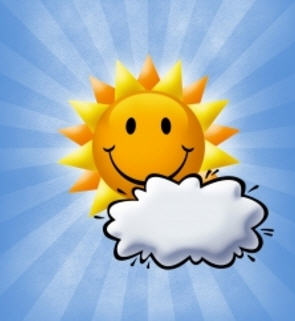How to Teach Weather

![☂ W: Weather Caster for a Day [Teacher Tips from A to Z]](https://m.busyteacher.org/uploads/posts/2011-08/1313561787_esl-weather.png)
Some people like the hot sunny days of summer. Others like the cool crisp air of autumn. Still others love the adventurous possibilities that come with the year’s first snowfall. Whatever type of weather your students are fond of, they will enjoy acting as weather forecaster for a day in this fun filled weather themed unit.
Think About It
Get your students thinking about the weather in different ways. You may want to share some books that talk about the weather such as What Will the Weather Be? By Lynda Dewitt or How’s the Weather? by Melvin Berger. Your students may have other books they like that mention or discuss weather conditions. Encourage them to share these books and why they like them. As you finish reading about weather, drop a little tune on the same subject. Kids like to sing, and there are songs about the weather that they probably already know. They might enjoy singing “It’s Raining, It’s Pouring” or “You Are My Sunshine.” You can even make up simple songs about the weather by taking a common melody (like “Mary Had a Little Lamb” or “Row, Row, Row Your Boat”) and writing a simple set of new lyrics. Your students may even take to the challenge if you explain the concept to them.
After reading and singing, show your class some clips of weather forecasters giving their daily message. You will want to have a variety of newscasters, and make sure you have both males and females for your class to see. Discuss with your students the similarities and differences between the people. Ask your students what they liked about the newscast and what they would change. Then take some time to talk about the different symbols they used in the programs to represent different types of weather. As a class, brainstorm different types of weather and decide on graphics to use for each type. You do not have to use the same ones that they use in the videos. In fact, keeping a simple representation for different types of weather will be better for your students. If you have calendar time every day, your existing set may already have a set of symbols for different types of weather that you can use with your class.
Talk About It
Now that your students are familiar with weather forecasters, explain to them that each of them will make a weather report similar to the ones you watched as a class. Have each person first decide what type of weather he or she would like to present. Then group your students by those types of weather: put all the sunny weather students together, all the rainy weather students together, etc. In these groups, ask your students to think about different words they know that talk about this kind of weather. Give each group some weather books and newspapers to use as references for additional words. Have each group make a list, and you may want to offer some additional words as well. This is also a good time to introduce your class to the thesaurus. By looking up one weather word, the group will find similar words that they may also be able to use in each of their forecasts. Then give each student an opportunity to share with his group some things that he might say in his presentation. The other students in the group should give him some feedback and then take their turns.
In preparation for the presentation, each student should draw a picture of the weather he or she will present. If you have butcher paper or any other large sheets available, have your students draw on these and then use them as a backdrop for the presentation. Allow each student to create his own backdrop for the presentation, and encourage him to use some of the symbols that your class decided upon for weather symbols.
Write About It
Before giving the presentation, each student should write out some of the things she would like to say. She can use the feedback she got from her group earlier to write out the best weather forecast that she can. If possible, make others resources available to your students such as maps and computers so they can research the weather accurately. Also, point out that weather forecasters are generally upbeat and pleasant, even when the weather is less than ideal. Have your students write out their weather reports in this friendly and informative style and then get ready for a presentation in front of the class.
Present It
The time has finally come for your students to give their weather presentations. Give each student some time in front of the class with his backdrop to talk about the weather. Record each presentation to use later. After everyone in class has presented, ask the class which report was most informative. Which was most entertaining? Which was most original? Next time you have an opportunity to talk with your students one on one, show each person his broadcast and discuss areas he needs to improve and what strengths he showed in the presentation.
Weather is a topic that everyone can relate to which makes it a good subject for use as a class presentation. Your students will have fun with their presentations while having many opportunities to practice their speaking skills.